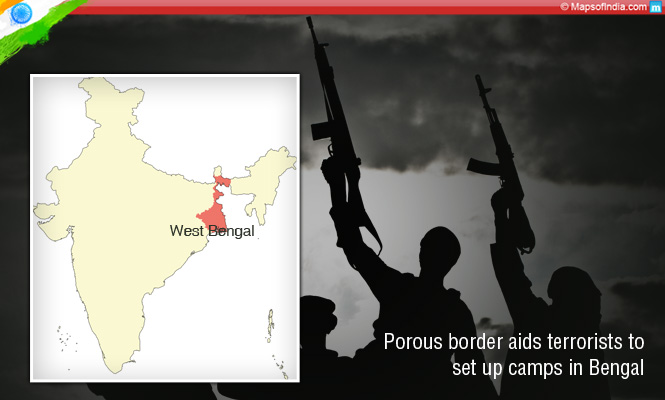Even those with elephantine memory might find it difficult to recollect when was the last time Kolkata encountered a terror attack. Well, the attack on the American Center in 2002 has been the single such incident. Since then, Mumbai, Delhi, Bangalore, Pune and even tier-2 cities have witnessed terror attacks. But not Kolkata. One question was on everyone’s mind – Why was Kolkata spared every time? Intelligence inputs, confessions by the arrested terrorists and observations of the security analysts give somewhat a convincing answer.
Kolkata is an important hub for the activities of terror outfits. Terror attacks in the city will unnecessarily put the scanner back on the city, which would result in enhanced surety measures and a possible hindrance in covert terror operations.
The recent blast in West Bengal’s Burdwan district and the seizure of IEDs, detonators, SIM cards, printed material mentioning Al Qaeda, Chechen rebels and Indian Mujahideen (IM) from the blast site once again vindicated the stand of the intelligence agencies.
It was early this year that NIA revealed how Kolkata is being leveraged as an important hub for the activities of IM. According to NIA, IM boss Yasin Bhatkal’s trusted aide Asadullah Akhtar had confessed to attacking American Center and kidnapping Khadim’s boss in Kolkata. He had revealed that Aftab Ansari had started the IM with a resident of Kolkata during 1999-2000.
The fact that West Bengal has been one of the “most silent but crucial modules for more than one decade” was proven true by Mohammad Jalaluddin alias Babu Bhai, the prime accused in the Khadim’s boss abduction case and 2007 Varanasi blast. He had transported 100 kilograms of RDX from Bengal to different parts of India. These explosives were used in several terror attacks including Delhi Jama Masjid attack and 2006 Mumbai attack.
Kolkata has provided shelter to the most-wanted terrorists and allowed them to use it as a safe haven for charting out the future course and collecting funds and explosives. According to Babu Bhai, the Pakistani team of LeT and HuJI had decided to set up a powerful sleeper cell in Bengal back in the late 90s. The objective was to use Bengal as a transit point and facilitate logistic supply from neighboring Bangladesh.
To put the focus back to Kolkata, not many might know that most dreaded leaders of terror outfits had made Kolkata’s Zakaria Street as their temporary home. Investigations unearthed the fact that IM co-founder Yasin Bhatkal spent several years in one of his relative’s house in Zakaria Street by posing as a student. Similarly, Seikh Sameer – a HuJI operative spent quite some time posing as a fruit seller in Zakaria Street. He handled his eastern India operations by being stationed at the central hub of Kolkata.
In case you don’t know, LeT operative Abdul Karim Tunda had spent considerable amount of time in Kolkata and its outskirts and even made relatives during his stay.
The reports of Kolkata Police special taskforce are scary, to say the least. They confirm the assumption that parts of Kolkata and border districts are widely used as hideouts by the terrorists. Besides arms, fake currency is also routed through districts like Dinajpur, Malda, and Murshidabad.
On a similar note, West Bengal should be squarely blamed for not being able to uproot the Students Islamic Movement of India. The state government had failed to crackdown on madrasas, which are still run by the SIMI.
The reason Bengal has gained prominence in the terror map since the 90s is its porous and almost unguarded border with Bangladesh. However, instead of just blaming on the unfenced border, the government needs to zero in on the terror networks a tad more seriously so that the scourge is wiped out from the state in a steady and sure manner.
Related Information:
Militant Groups in India
Is ISIS a threat to India?
India’s 10 Most Wanted Men
Cross border firing Issue between India and Pakistan
Terror Attacks: Has Jihadi Movement Come to Northeast?
Revisiting Mumbai Terror Attack: No Lessons Learnt from 26/11
Terrorist Attacks in India – New use of cycle
Hindu-Muslim Relationship
In the Name of Jihaad (Part II): 2013 Patna Bombings






